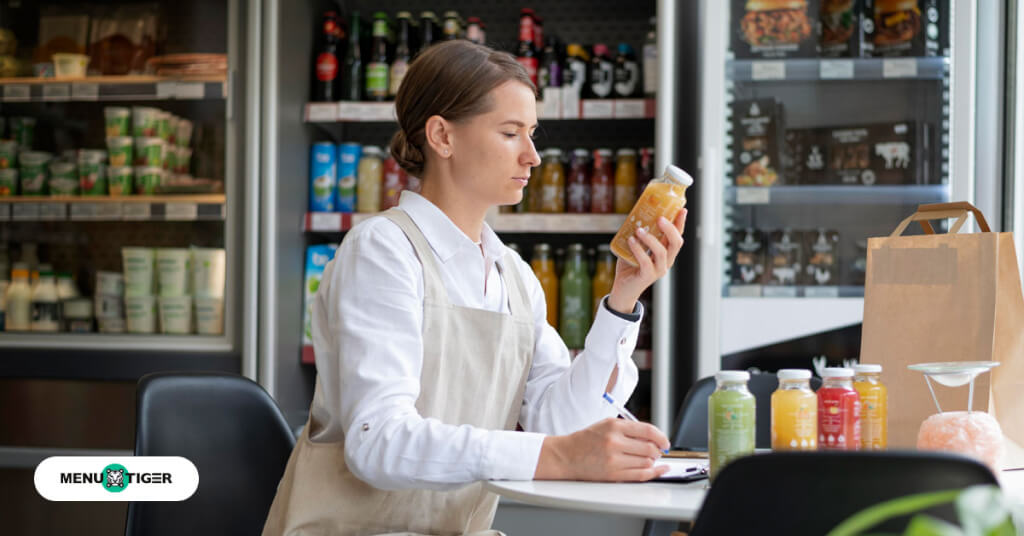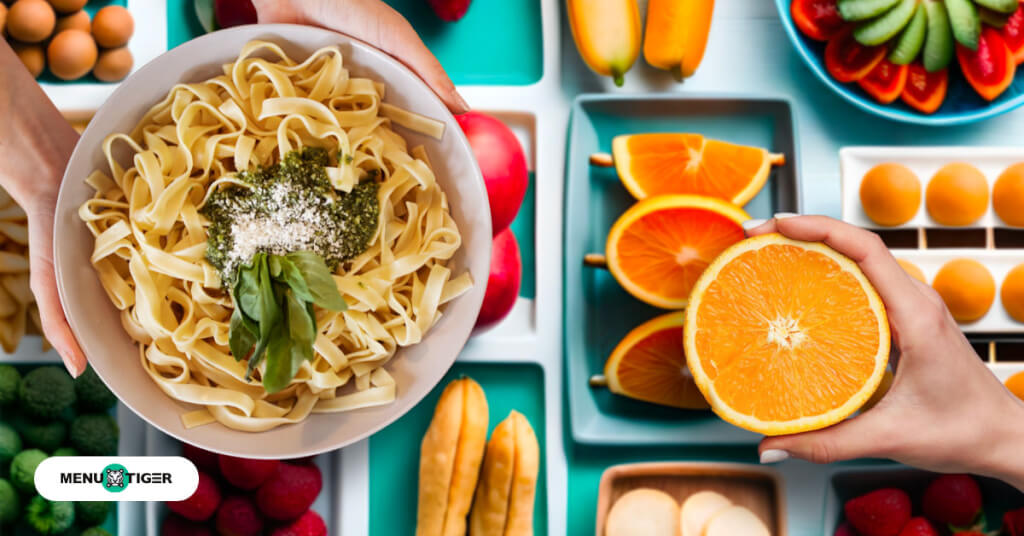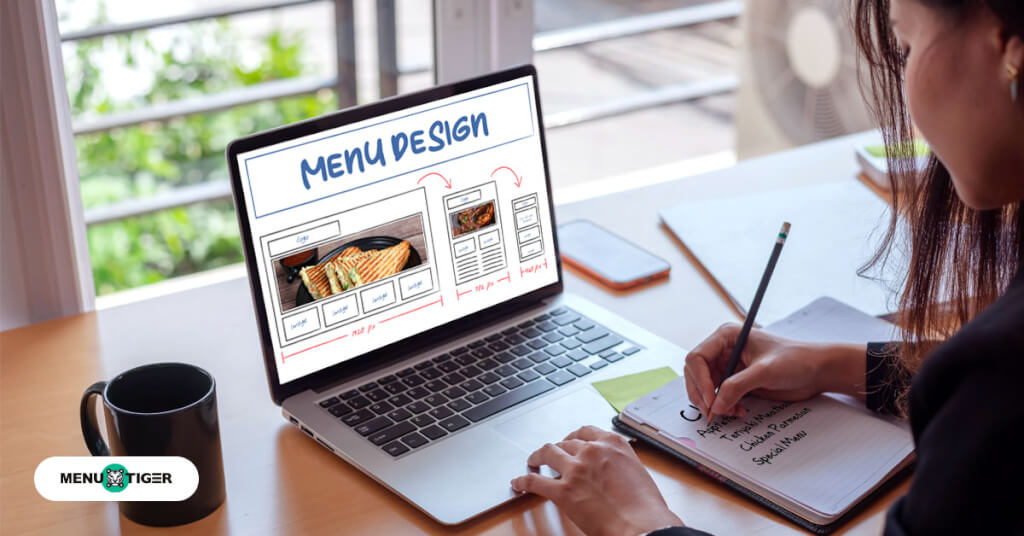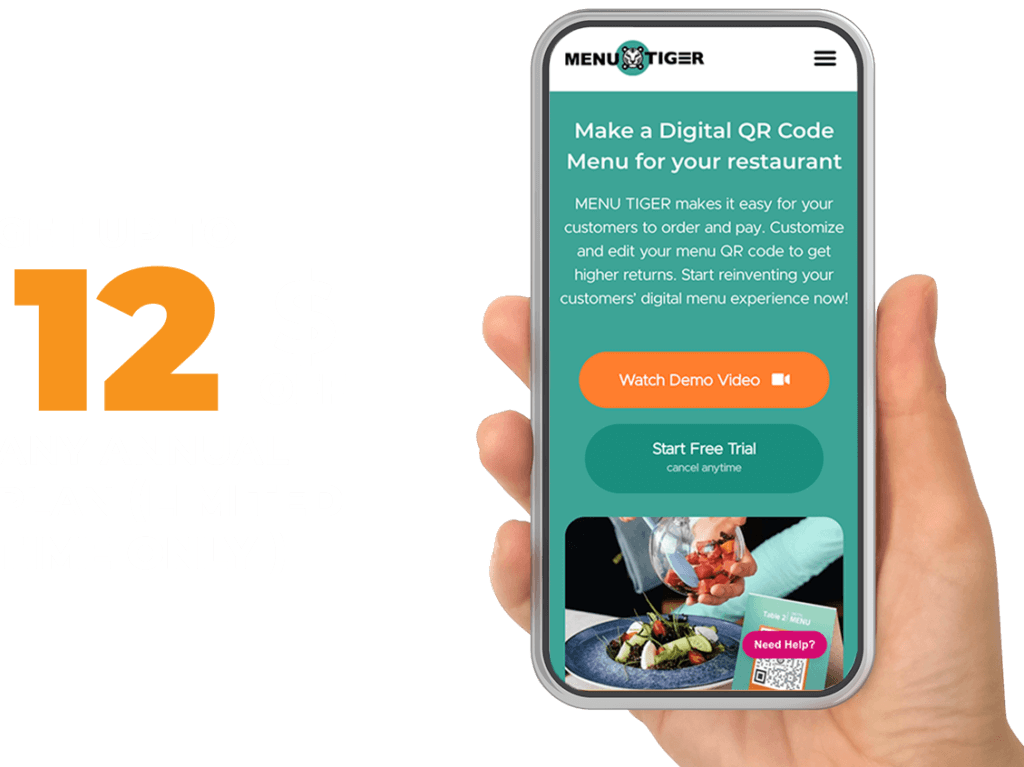Making the best menus to keep food costs down without compromising quality is a constant challenge for restaurant owners and managers.
You can reduce food costs while maintaining quality when running a new diner.
Consider using local fresh items and creating daily specials with excess ingredients to avoid food waste.
Managing costs is as important as creating delicious dishes for long-term success and sustainability. Using advanced tools like interactive menu software can help you control expenses and reduce the cost of producing food.
Let’s break down these strategies to make your dishes cost-efficient.
Table of Contents
ToggleWhat is decreasing food production costs?
Decreasing food production costs means cutting down preparation expenses and reducing waste to optimize your restaurant’s food preparation. This strategy leads to more cost-efficient operations.
Remember that you must still guarantee the quality of your food and beverage items, even though you have reduced the costs necessary to prepare and serve them.
Before finding ways to cut down your expenses, you must calculate your actual food cost. This will give you an overview of your spending and determine which categories you can adjust your expenditures.
What is the ideal food cost?
The ideal food cost is a financial check for restaurants. It is the percentage of the total expenses on buying and preparing food compared to the total income it gets from selling a dish.
One way to know how to cost your menu is to know how much you spend for each menu item. Here’s how you can measure your total costs using this food cost formula:
Cost of each ingredient + purchasing costs = menu item food cost
- List each component that goes into a particular dish you wish to make. Remember to include condiments, seasonings, and garnishes.
- Collect the prices of each ingredient and calculate each cost on a plate. For example, if 1 liter of oil costs you $1 and yields 5 cups, and you need 2 cups for a dish, it would be $0.40.
- Put together all costs related to food and inventory, like delivery fees, interest, return fees, and other charges—these are your purchasing costs. Do not include labor expenses.
- Add your total cost of ingredients and the purchasing costs together. The sum will be the food cost of your menu item.
Having budget-friendly food production cuts your restaurant cost a lot, and you can offer affordable prices for your dishes while still maintaining the quality.
Who would not want five-star meals at an affordable price? You only need a few tricks to jumpstart your smart-saving journey to make your cuisines cost-efficient.
How to keep food cost low: 11 strategies for making food menus cost-efficiently

Cutting back on your meal expenses can be overwhelming when considering their quality and price. But you need not worry. We’ve listed down these strategies to help you on how to keep food costs down:
Use seasonal and local ingredients
Using seasonal and local ingredients to make menus improves the quality of your dishes without being heavy on your budget.
Seasonal produce is products harvested during a particular time of the year. Following the law of supply and demand, these products become more affordable due to their abundance.
Farmers must sell these produce before they spoil, so you won’t have to spend much getting the freshest, most nutrient-rich ingredients.
Local produce refers to crops and fresh food grown within your area. Working with local farmers can lessen expenses since you do not need to import these ingredients from afar cities or other countries.
Try looking for restaurants that use seasonal and local ingredients. Check out the best restaurants in Lake Tahoe for the summer. They offer menus that can beat the heat of the season, which you can benchmark to.
Implement portion control of ingredients used
Portion controlling not only focuses on the amount of food that should be on the plate but also the quantity of ingredients in a dish.
This is one of the effective strategies on how to cost menus while thinking of their profitability, ensuring that each of your cuisines contains a consistent ratio of ingredients. Maintaining ingredient ratios is important for meal quality.
If the portions are inconsistent, the actual cost of making your dish and its quality will also be affected.
Use your kitchen weighing scale as one of your portion control tools to determine the correct balance of components to put on every food item. It helps maintain the food cost based on your standard portion size.
This way, you will not waste any ingredients and serve your dish with the utmost quality you can offer.
For example, if you are running a food truck business, one of the most practical tools to create a food truck menu is controlling your portion of ingredients.
It will help you determine the quantity of components you should prepare in a dish for a day of operation.
Not only does it help you learn how to control food costs in the kitchen, but it also maintains the quality of your offerings, satisfying your customers in their dining experience.
Cross-utilize ingredients
Cross-utilization means using the same ingredient to make multiple dishes. With this cost-saving trick, you can reduce food waste in your restaurant.
For instance, the Nicoise salad, a clubhouse sandwich, and a burger all use lettuce. Salads and pasta dishes also share tomatoes as their common denominator.
The trick here is offering dishes with the same ingredients to lower your expenses. This way, you can make the most of a smaller cost.
Be creative in your recipes. Don’t be afraid to experiment with different ways to use your ingredients. The more resourceful you are, the more effective cross-utilizing becomes.
When restocking your ingredients, you can also use the First-In, First-Out (FIFO) method. You must use the remaining goods in your pantry before the ones you just bought.
Use cut-price parts of meat
Choose less expensive cuts of meat that can be as flavorsome as their high-grade counterparts. You just have to prepare these properly to get the most flavor.
Consider using methods such as braising (slowly cooking meat with oil), slow cooking, or marinating (soaking meat in a seasoned liquid for an hour or overnight) to elevate the flavor and tenderness of your cheaper meat cuts.
Let’s say you wish to add steak menus. Ideally, a ribeye cut is perfect because fat is evenly distributed (marbling), giving off much flavor. But that’s precisely why it’s more expensive.
However, you can go for cheaper options that produce the same quality. For one, there’s the flat iron steak, considered the second most tender cut of beef, with marbling that matches the expensive cut.
Sourcing out cheaper cuts will cost you less, but take note not to sacrifice your food quality.
Control portion sizes of each food item

In making the best menus to keep food costs down, controlling the portion sizes of each dish is essential.
But it does not mean you’ll have less on the plate; rather, you are putting a standard portion that your guests can consume.
To help you begin your portion control practice, here are some tricks to help you:
Use smaller plates
Placing a standard-sized portion on a large plate can make it look smaller, which can affect customers’ satisfaction levels. Conversely, setting it with smaller dinnerware makes your food look more emphasized.
Be mindful when trying this strategy because it might backfire on you.
If your resto is known for serving bigger dishes and you suddenly change the portion sizes, your guests might notice and complain.
It helps to let your customers know about your planned changes ahead of time. Social media for restaurants can be a great platform to update your guests.
Remember to highlight why you are shrinking portions, for instance, by promoting food waste management.
Take note: If you make your servings smaller, you must also reduce their price.
Use a portion scale
Weigh the food you serve. If you want to serve the right amount of ice cream in your waffle cone menu, you can use a 15-ounce portion scale so you will know if you put too many scoops in a serving.
Using your scale each time can create consistency in your menu and reduce food costs.
Make standardized recipes
Having clear-cut recipes with exact quantities of each ingredient will save you from spending too much. It will also give your customers a fair serving size.
For instance, two of your customers at the same table wanted to try burritos. As you serve their orders, one receives a larger and fuller serving filled with meat, cheese, beans, and vegetables. The other gets the slimmer and skinnier one with fewer ingredients. It can cause negative feedback.
Consistency is the key. Ensuring you serve the exact amount and quality of food can foster trust among your customers and encourage them to dine in again.
Offer vegan and vegetarian options
Vegan and vegetarian menus might sound the same, but they differ significantly.
The former is much stricter; aside from animal flesh, avoiding dairy and eggs is a must, while the latter does not contain meat and fish or any food made from animals.
Plant-based meals offer many benefits. Aside from being healthy and inexpensive, they also expand your menu. You can cater to potential customers with dietary preferences and restrictions.
Say you’re offering burgers. Instead of using beef patties, you can make a cost-effective plant-based patty. This way, you lower your food cost and promote innovative recipes that help broaden your customer base.
If you want to know more about healthy recipes, you can get ideas and insights from the best vegan restaurants in Berlin, the German capital.
Nasch, an eccentric vegetarian diner in Hamburg, offers various vegan and vegetarian foods, such as salads, sandwiches, pasta, and teas.
Add daily specials to your best menus to keep food costs down
Introduce special recipes made out of already available or soon-to-expire ingredients.
It is an opportunity for you to showcase your creativity by making new dishes out of your supplies and ensuring they are used efficiently.
You reduce food waste and keep your menu fresh for returning customers. The limited availability of these offers will encourage customers to try them.
You can add promotions, discounts, and weekly deals to gain more foot traffic, increasing your sales and revenue.
For instance, you still have an unused bottle of wine on your shelf. Instead of throwing it away, you can hit two birds with one stone by using what you already have and saving money while gaining sales and possible profit.
To market these, you can add them to your official offers, write them down on your special deal boards, or use a QR code menu to make them more accessible for your customers to review. You can also promote them on your social media platforms.
Apply menu engineering to maximize your profit

Menu engineering is a restaurant marketing strategy that can help you determine which food items to highlight by examining and improving your design.
It can maximize profit by showing you which are profit-making and which need to be reconsidered or removed from your list. Here are two crucial steps in this strategy:
Categorize your dishes
Classify them into the following:
- Stars: High profitability and popularity. These are the most well-liked, sellable, and affordable items on your menu.
- Puzzles: High profitability, low popularity. These are menu staples that are profitable but difficult to sell.
- Plowhorses: Low profitability, high popularity. These menu items may have a lower profit margin but are well-liked by your customers.
- Dogs: Low profitability and popularity. They are expensive to make and generally unpopular to customers.
Grouping them will determine which of your dishes are more profitable and which are not.
Create your menu design
Your dishes are among the most powerful marketing tools you have because they express who you are and what you want to communicate with your customers.
How you will present them is essential. So after you categorize your dishes, you must list the food items you want to include in your layout.
In your designing process, you need to take note of these things:
- Basic information. In your menu, include all details about the food you are selling, operating hours, address, and social media platforms.
- Reflect your brand’s visual identity on your design. Use the same colors, fonts, and icons in your logo and other materials for great branding.
- Use the golden triangle method to place food items strategically. Position the best dishes in an inverted triangle shape, use boxes, callouts, or vivid descriptions to highlight signature items, and organize the menu into logical sections like appetizers, beverages, and desserts.
- Use descriptions and imagery wisely. These details will make it easier for your customers to understand your menu.
Remember: Your menu is more than just a list of food items. It should speak to your customers, so merge your restaurant branding and personality to leave an impression in their minds.
Make the best menus to keep food costs down by negotiating with your suppliers
Building good relationships with your suppliers is an edge for succeeding in any negotiation, especially regarding prices.
The key here is to have an open communication with them. Be clear on your expectations, like due dates of delivery, quantity, and quality of the ingredients you need.
Listen to their expertise and create an agreement that meets both terms—yours and theirs.
Be transparent about your needs and challenges, such as steep prices. Make necessary suggestions for adjustments that could benefit you and your suppliers.
Consider visiting them occasionally to strengthen your bond and leave an impression. Let them know that you value their presence and contribution to your business.
Monitor food costs regularly
Keep track of your food costs to know if you are still within your expected expenses. You can use a menu matrix—a detailed summary of each dish in a spreadsheet as your inventory.
It will be easier for you to track down significant fluctuations.
Make sure to update the matrix if you change the menu so your staff can study what your restaurant offers. Make the most out of it by generating weekly reports of your observations.
This strategy will give you an overview of your food expenses for all your dishes.
Track customer preferences using a digital restaurant menu QR code
Paying attention to which menu choices are popular among customers and which are not will help you decide which items to keep or take off your list.
Gathering this information can be challenging if you happen to do it manually, but using a tech-savvy tool like a QR code-powered menu system can make it hassle-free.
With the QR menu, you will know how often diners order a particular dish since you can access this data on the dashboard. You can also create a separate QR code for feedback forms your customers can fill out afterward.
Make these codes accessible by placing them on your counters, table tops, table tents, and other areas visible to your guests.
MENU TIGER: An interactive menu software that can help reduce costs

Making the best menu to keep food costs down can be frustrating.
Along with deciding what dishes to make, ingredients to use, inventory instruments to consider, the marketing tools to utilize, and many other aspects, you should think about the overall operation to track your customers’ preferences. Learn what food items have been sold and which ones are not.
Having user-friendly software that is compatible with your needs and can help ease your frustrations will give you an edge over others.
With MENU TIGER, you’re guaranteed a smooth operation experience.
All you need is an active email and phone number. Once you’re in, you can access its features depending on the subscription of your choice. If you want to test it out, you can explore the FREE Plan.
Here are some features offered by MENU TIGER:
Create your own website
You can create your website, manage it, and update it directly in the software. You don’t need to worry about a complex process.
This means that you no longer need to process coding and work on the technicalities of website design and development.
Integrate taxation for menu offerings
Adding tax rates to menu prices is made extra easy with MENU TIGER.
Its taxation integration ensures that your customers know that their meal prices include tax, which promotes transparency and trust in your restaurant.
It will also help avoid unpleasant bill surprises after they order.
Activate Hot Actions for faster customer assistance
A restaurant waiter call button system streamlines your workforce, making it an excellent time-saver.
Simply print your QR code and place it on your counters, table tops, or wherever your guests can see it.
Once scanned, the QR code will direct them to your website, displaying your menu and the Hot Actions button. Your customers can automatically make last-minute requests using this feature.
For instance, you can automate “Clean up this table” as one of the requests for the Hot Actions feature. Customers can simply tap the button to notify you or a waitstaff through the dashboard.
Collect customer feedback and ratings
Gathering customer comments and suggestions is easy with this all-in-one restaurant software.
Yes, you can also input your survey questions in your QR codes, which your customers can access anytime.
Edit and update menu details
Another essential feature of this software is that you can edit and update other details aside from making your own menu.
If you change any ingredient in a particular dish, you can directly change it in the panel, making it more convenient and cost-saving than a printed menu.
Changes are reflected automatically in your QR code menu, which you can customize accordingly.

Create your best menus to keep your food costs down with MENU TIGER
As a restaurant owner, you must balance cost-saving food production and quality food items. You must proactively determine the right formula that will work for your business.
Luckily, you won’t have to do this by yourself. You can use intuitive software to help you manage your restaurant efficiently and effortlessly.
Kick off your smart saving journey with MENU TIGER’s advanced management system. It is an all-in-one restaurant technology with everything you need to manage your business.
Sign up for a freemium account today.
FAQ:
Focus on seasonal and regionally obtained ingredients as they are fresher and more cost-effective. Use portion control to reduce waste and guarantee uniform serving sizes. Place high-profit goods in strategic locations to practice menu engineering.
To maximize each buy, use ingredients in multiple dishes. Providing vegan and vegetarian options can also be cost-effective. Keep your menu simple to streamline processes and bargain with suppliers for lower prices.
Lastly, keep a close eye on food expenses and modify portion sizes to preserve profitability while delivering high-quality meals.





